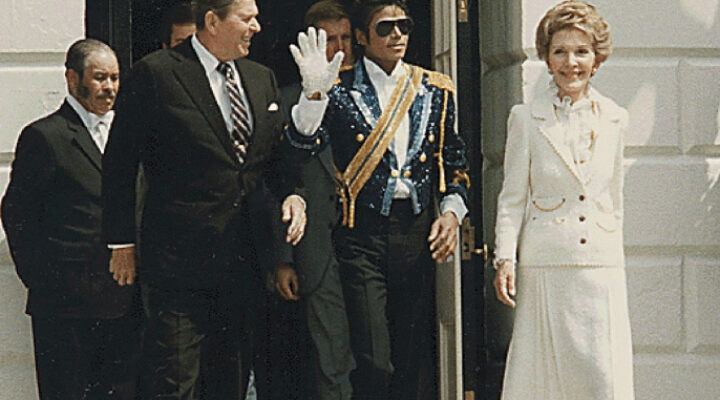The narrative that most leftwingers have of the 1980s is that it was an era of conservative backlash. Essentially, they argue that after the rapid gains made by women and blacks in the 1960s and 1970s, White men rose up and elected Ronald Reagan who then proceeded to stop the advancement of those gains, and even managed to push back against established leftwing victories. It’s a simple story, but one that holds much sway over the Left. There is another school of historians, mostly but not exclusively part of the normie Right, that offers a different point of view. Rather than a rejection of the core progressive values of the 1960s and 1970s, the 1980s were instead an effort to restrain its excesses, while those values remained and even became normalized. Instead of being “The Great Backlash” the 1980s, it was, to borrow a phrase used by Gil Troy, “The Great Reconciliation,” an attempt to synthesize the revolution of the 1960s and 1970s with the America of the 1950s.
I feel this model works better at understanding how the 1980s actually played out. Take race, for example. It is commonly stated that Reagan was elected due to Whites being fed up with the advancements blacks made previously due to the Civil Rights Movement; however, this view fails to adequately explain several important events during the 1980s. There was never a serious attempt to bring back segregation. Moreover, the 1980s saw millions of White suburbanite girls and boys putting up posters of Michael Jordan on their walls. There is simply no way White parents would have allowed such behavior in the 1960s, including liberal, pro-Civil Rights parents. No athlete had a public profile like Michael Jordan since at least Babe Ruth, and even that is debatable. Another Michael, Michael Jackson, was so popular in the 1980s he could produce 20 minute or longer music videos, where the backstory would be several times longer than the song itself and could count on getting airtime on MTV. We can see this with the popularity of Eddie Murphy, too. For a time in the 1980s, almost every movie he headlined was guaranteed to be a big hit. Though there had been athletes with comparable popularity to Michael Jordan (Babe Ruth) or musicians equivalent to Michael Jackson (Elvis Presly, the Beatles), there had never been a standup comedian with the similar star power of Eddie Murphy in the 1980s.
If we were to include the presidency of George H.W. Bush in the “1980s culture,” it would include the rise of “Gangsta Rap,” with its explicit attacks on White America and widespread reach in White suburbia. But even beyond popular culture, we can see signs of the general acceptance of the 1960s in a “supposedly” rightwing decade. This was the decade when Martin Luther King Day became a federal holiday and the man became, in the eyes of many conservatives, included in the American pantheon of figures such as Columbus, Washington, and Jefferson.
We can also view evidence of “The Great Reconciliation” in terms of sex. Despite all the handwringing from the Left that conservatives wanted to put women “back in the kitchen,” this never happened. Women continued to enter the workplace. There is a reason why the 1980s is notorious for the prevalence of “latchkey kids” – children that were often left unsupervised because their mothers were working. There is also a reason why the pro-life movement switched their tactics in the 1980s. In 1980, they were working towards a constitutional amendment to ban abortion. But by 1989, after realizing there was no political will to do so, they realigned to get the Supreme Court to overturn Roe v. Wade.
One of the best examples of how the 1980s tried to synthesize the 1950s and the 1960s can be observed in two of the most popular shows of the decade – The Cosby Show and Growing Pains. In many ways, both shows represented a revival of the television shows that had been popular from the 1950s and early 1960s, programs that focused on a middle-class suburban family with a strong and wise father as the patriarch (think Leave it to Beaver or Father Knows Best). In the 1970s, this formula went into drastic decline, to be replaced by more adult centered shows (All in the Family), programs where the father was gone (The Partridge Family), or shows that brought the prospect of remarriage to the forefront (The Brady Bunch). But while many shows of the 1980s did bring back the old formula, they only did so within the parameters set by the radical 1960s: The Cosby Show featured a back family while Growing Pains featured a working mother front and center. By the end of the decade, even this attempted revival would die out with the arrival of The Simpsons. In turn, this would lead to a new trend – the Homer-ization of television dads. Instead of the wise patriarchs of the 1950s and even 1980s, fathers were now buffoonish, overgrown children. The mother was the one really in charge. This has been the major formula ever since, especially for White fathers.
Understanding how the 1980s really worked does lead to another serious question – will we see a “Second Great Reconciliation”? Much as the 1980s was a synthesis of the 1950s and 1960s, will we see this same trend again? Will we see a blending of Heritage America with globohomo? Certainly, many on the normie Right want this, hence why National Review will publish an article calling for a compromise on transgenderism. They want this so they can pacify their base and go back to the “invade the world, invite the world” era of George W. Bush. However, a “Second Great Reconciliation” is not desirable or even possible. The reason why this is not desirable is simple enough. By trying to tame the excesses of the 1960s and even synthesizing with it, Heritage America merely kicked the can down the road. A “Second Great Reconciliation” would likely do the same.
Even if a “Second Great Reconciliation” was desirable, it may not even be possible. Remember, the Left had to be dragged kicking and screaming to “The Great Reconciliation” via a string of humiliating electoral defeats. From 1968 to 1988, the Republican Party (ostensibly rightwing) won all, but one, presidential elections and did so by wide margins. In four of those elections, the more leftwing candidate won only ten or fewer states. Twice they lost 49 states and once they came within 4,000 votes from losing all 50 states. And that one victory? It came right after Watergate and, even then, it was not clear who was the more rightwing candidate. The winning candidate was a Southerner who proudly played up his Christianity and made an explicit promise to restrain the revolutionaries of the 1960s, while the losing candidate was a Yankee whose wife proudly mentioned her support for abortion. In other words, the Left accepted “The Great Reconciliation” not because they understood the dangerous excesses of the 1960s, but because they were forced through defeat.
But demographic changes have made this strategy an impossibility. In the 1980s, the demographic change brought about by the 1965 Immigration Act had not quite fundamentally altered the electorate. This has not been the case since the 1990s. The increased share of non-Whites has given the Left an electoral cushion that makes the horrendous defeats they suffered from 1968 to1988 impossible. Yes, many non-White Democrats do not like globohomo, at least not to the extent that White Democrats do; however, this is ultimately a moot point, they still vote for the Left no matter what. Adding to this, the Left has been told that the 1980s was an era in which they “chickened out.” Had they kept pushing their agenda, they would have gotten what they wanted earlier. With this in mind, they have taken an “unconditional surrender” mindset. They will accept nothing less than unconditional surrender and the Right must come to terms with this. Nothing will ever be enough. There is no way to compromise.
The 1980s were, like any other decade, a complex time and we cannot be too careless in painting the decade with a broad brush. The era had great music and movies, and these often-celebrated masculinity. It was the last hurrah of Heritage America, and the last time there was no campaign to eradicate the Confederate flag. But by attempting to reconcile itself with the 1960s and 1970s, the decade ended up sowing the seeds of our current crisis. This is why we cannot make the same mistake; we would just give a future generation something even worse to defeat. Even if it were desirable, it is not possible. The Left is in no mood for a “Second Great Reconciliation” and for good reason – they no longer think they have to do so.







You’re not getting the recognition you should be getting in the comments. sir. This is a very good article and a very good perspective. Keep up the good work!